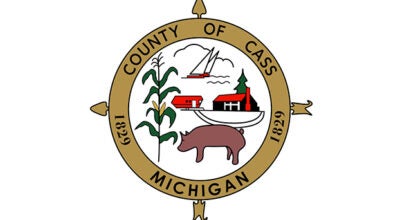Conservation District: Be on the lookout for Japanese knotweed
Published 6:37 pm Thursday, September 28, 2017
Japanese knotweed is a fast growing, dangerous invasive plant that is becoming more and more common in southwestern Michigan.
Because of the deep, strong roots, which can reach 10 feet deep, knotweed can break foundations and hardtops, and can threaten infrastructure in homes and on public property. The stems of the plant can grow up to 20 feet tall, and grows dense enough to become impassable to both animals and humans.
Knotweed is often able to outcompete native species, partially because of how early and quickly it grows. The plant will continue to grow throughout the summer, putting out large, heart shaped leaves on zig-zagging stems. The plant is often called “Michigan Bamboo” because of the bamboo-like reddish nodes up the tall, hallow stem of the plant. In late summer, Japanese knotweed puts out sprays of creamy white flowers.
The Cass County Conservation District is hoping to help homeowners and citizens monitor, map, and learn how to treat knotweed. This plant can reproduce from a fingernail-sized piece of the stem or root, making it difficult to control once it establishes. If you have knotweed, or if you know of a patch, the Conservation District is encouraging the public to report it either to the District directly, or via the Midwest Invasive Species Information Network (MISIN) at misin.msu.edu. The first step is to make sure that people know that it’s here, and that it’s a problem. After that, we can work together to manage the issue. Please contact Kimberly Barton at Kimberly.barton@macd.org or (269) 445-8641, ext. 5.
If people have knotweed on their property, make sure to avoid mowing or digging the plant, since it can cause it to spread further. Instead the state recommends a fall treatment of specific herbicides to combat the plant’s significant root system. The Conservation District has also purchased a tool, called a Japanese Knotweed Injector, that homeowners can borrow from the Conservation District office. The Conservation District is hoping to increase outreach and education this summer by informing homeowners with knotweed of the impacts.
The Cass County Conservation district is part of the Southwest by Southwest Cooperative Invasive Species Management Area (SW X SW CISMA) with the Berrien and Van Buren Conservation Districts. The SW X SW Corner CISMA is a Michigan Department of Natural Resources grant funded program to manage invasive species in Berrien, Cass, and Van Buren counties. With funding from the Michigan Invasive Species Grant Program, the CISMA aims to help landowners and stakeholders in the Southwest Michigan area manage invasive species.





